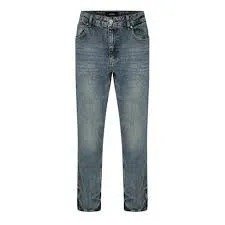Safety of your feet from hazards in the workplace is important. Usually, a worker goes to work, and even on days, he works diligently. However, as a worker, you might be scared of getting foot injuries due to heavy machinery or sharp tools.
It must be challenging and overwhelming for you to work in such a scenario. So, this is where safety footwear comes in.
There are numerous types of safety footwear out there; two types of footwear that you will encounter in your search are steel-toe capped boots and composite-toe caps boots.
If you are wondering about buying them, then knowing about these boots and the differences between them is crucial.
What Are Steel Toe Capped Boots?
These boots are one of the most widely recognized types of safety footwear. These boots come equipped with a reinforced steel cap in the toe area to protect your feet from heavy objects, sharp tools, and potential impacts. The durability and strength of these boots make them a popular choice for workers in industries such as construction, manufacturing, and heavy machinery.
What Are Composite Toe Caps?
Composite toe caps are made from non-metal materials such as carbon fibre, fibreglass, or Kevlar. They are designed to meet safety standards, just like steel-toe boots, but are generally lighter and more comfortable, especially in specific working conditions.
Steel Toe Boots vs. Composite Toe Boots: Key Differences
Both steel and composite toe caps meet safety standards such as EN ISO 20345, which requires a minimum protection level for impact resistance. However, each type of boot has different characteristics that might make one better suited for your job than the other.
1. Weight
Weight is a crucial factor when choosing between steel-toe and composite-toe boots. These boots are generally heavier due to the density and weight of the steel, which provides excellent protection but can become burdensome for workers who spend long hours on their feet. The added weight may lead to discomfort, causing foot fatigue over time. On the other hand, composite toe boots, made from materials like carbon fibre or Kevlar, are significantly lighter. This makes them a better choice for all-day wear, reducing the strain on your feet and increasing comfort without compromising safety standards.
2. Electrical Hazard Protection
If you work in environments where you are exposed to electrical hazards, composite toe boots are a better choice. Since they are made from non-metal materials, they don’t conduct electricity, providing added protection. In contrast, steel toe-capped boots conduct electricity, which could pose a risk in specific jobs.
3. Temperature Insulation
Temperature insulation is an important factor when choosing between steel and composite toe boots. Steel toe caps tend to conduct both heat and cold, which can make them uncomfortable in extreme temperatures. In hot environments, steel can retain heat, causing discomfort, while in cold conditions, it can make your feet feel colder. On the other hand, composite toe caps, made from materials like Kevlar or carbon fibre, do not conduct heat or cold as easily. This means composite toe boots provide better thermal insulation, keeping your feet more comfortable and reducing the risk of discomfort in fluctuating temperatures.
4. Durability and Protection
Steel and composite toe caps are designed to meet rigorous safety standards, offering protection from falling objects, sharp tools, and workplace hazards. While both types offer a high level of safety, steel toes are generally more durable, providing greater resistance to impact and compression. This makes them ideal for industries like construction, manufacturing, and heavy machinery, where heavy objects and harsh conditions are common. Steel toe boots can handle extreme forces, ensuring long-lasting protection in demanding environments. In comparison, while composite toe caps offer solid protection, they may not withstand the same level of impact as steel.
Conclusion
Both steel toe and composite toe capped boots offer strong protection, but the right choice depends on your specific work environment. Steel toe boots provide superior durability and are ideal for heavy-duty jobs, while composite toe boots are lighter, more comfortable for long wear, and better for environments with electrical hazards or extreme temperatures. Consider your job’s safety requirements and comfort needs when choosing between these two options, ensuring you have the right protection for your feet.



